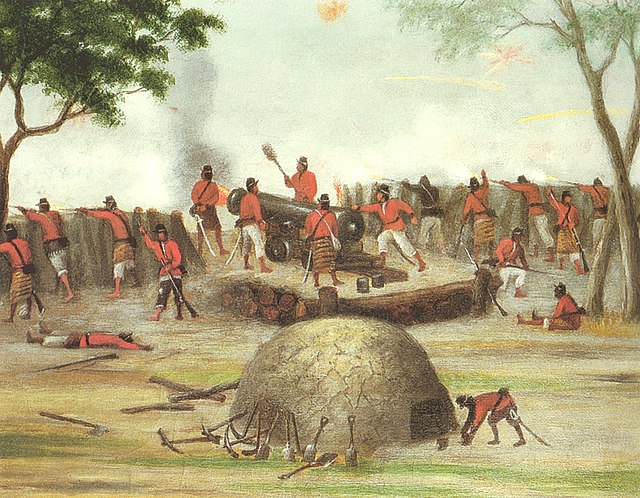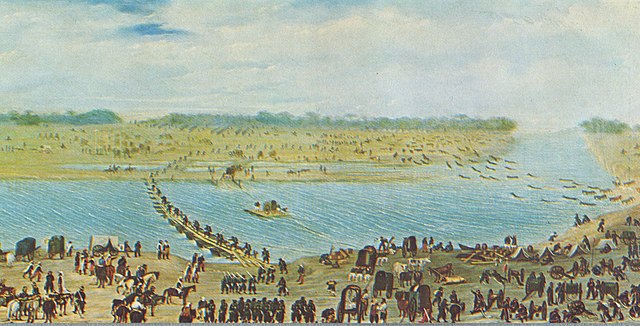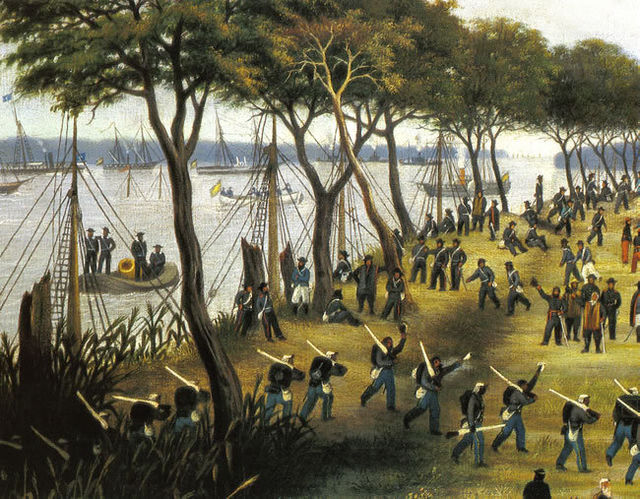The siege of Humaitá was a military operation in which the Triple Alliance flanked, besieged and captured the Fortress of Humaitá, a Paraguayan stronghold that was referred to as the Gibraltar of South America. It fell on 26 July 1868. It can be considered the key event of the Paraguayan War since the fortress had frustrated the allied advance into Paraguay for more than two years. However it did not surrender as the defenders escaped, most of them to fight another day.
The allies resort to balloon observation to pick their way through the wetlands of southern Paraguay — the first use of aviation in South American warfare (Sketch by American balloonist James Allen, 1868)
Context: wetlands of southern Paraguay
Paraguayans defending at Curupayty, by the Argentine painter Cándido López (detail)
Aftermath of the Battle of Curupayty, oil on canvas, Cándido López. Paraguayan soldiers are stripping the allied dead, imprisoning the wounded if they can walk, shooting them if they cannot. Cándido López lost his right arm in the battle; he painted this with his left hand
Treaty of the Triple Alliance
The Treaty of the Triple Alliance was a treaty that allied the Empire of Brazil, Argentina, and Uruguay against Paraguay. Signed in 1865, after the outbreak of the Paraguayan War, its articles prescribed the allies' actions both during and after the war. The war led to the near-annihilation of Paraguay.
Allied troops recapturing Corrientes province, Argentina. Painting by Cándido López (1840–1902), who was there.
Francisco Otaviano, poet and diplomat, the Brazilian envoy
Dr Rufino de Elizalde the Argentine foreign minister.
Invasion of Paraguay. Ferried by the Brazilian navy, Argentine troops land at Curuzú. The brunt of the military effort was borne by Brazilian soldiers.








